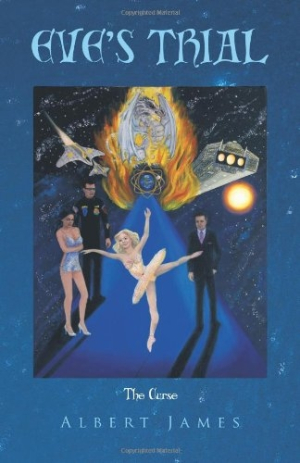Eve's Trial
Albert James’ Eve’s Trial: The Curse is an interesting attempt at creating a cross-genre novel. Combining science fiction and erotica, James tells the story of Sheena, a woman mourning the loss of her daughter, and Tish, a transsexual who is hated because she doesn’t put out. Over the course of 650 pages, both Sheena and Tish finds themselves fired from their jobs as Remote-Tele-Operators (RTOs, or off-site robot operators) after being targeted by a group of scientists conducting a secret experiment on the satellite Veleda. While the parameters of the experiment are never made clear, it risks destroying all life on Earth and is related to an age-slowing genetic anomaly shared by both Tish and Sheena’s daughter.
While science-fiction and erotica can often blend together beautifully, the two genres do not work well in Eve’s Trial: The Curse. The science-fiction aspect of the novel is especially undermined by a cast of one-dimensional characters. Throughout the novel, the female characters are obsessed with clothing and genetalia. And every character is introduced by his or her race or color: a security guard is Hispanic; a commander is a “black, light-skinned man.” The author’s use of such characterizations crosses the line when he refers to an Asian scientist as a “chinaman.”
The writing never reaches a level of quality or believability to function as a piece of erotica. The women in the story get angry at each other and shoot each other incongruous “quick steamy glances.” Breasts or vaginas (here, also known as “lips”) are referenced on almost every page, but never described. Like the characters, the author tells the reader that they are there, but never takes the time to actually show them.
The author is at his best when he addresses the technology used to build massive space installations. While no time is spent describing this technology, other than its huge size, James creates a sense of delicate urgency when he juxtaposes the repercussions of losing a single bolt (paperwork, job loss) with the dance-like motions made by the RTOs.
Reviewed by
Joseph Thompson
Disclosure: This article is not an endorsement, but a review. The publisher of this book provided free copies of the book and paid a small fee to have their book reviewed by a professional reviewer. Foreword Reviews and Clarion Reviews make no guarantee that the publisher will receive a positive review. Foreword Magazine, Inc. is disclosing this in accordance with the Federal Trade Commission’s 16 CFR, Part 255.

